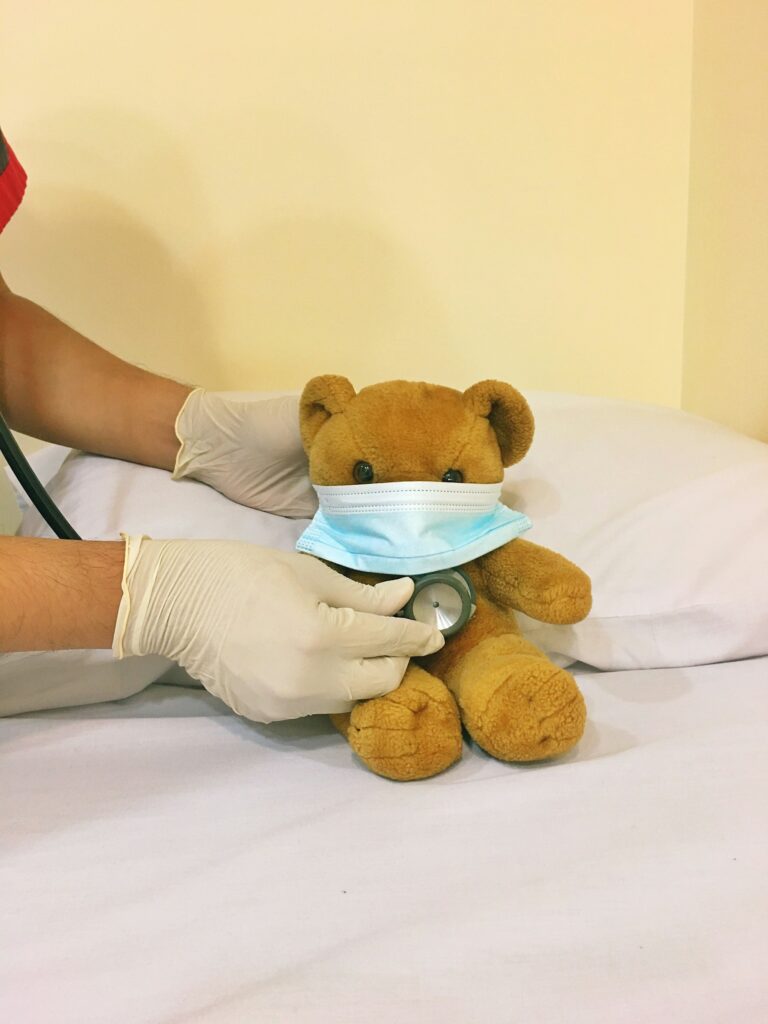Wondering if your child’s eating habits signal something more than just a passing phase? Many parents face confusing moments, especially when meal times turn tense or children begin to refuse entire food groups. It is common to feel anxious, even a bit helpless, in the face of unpredictable growth patterns and shifting appetites. Yet, behind the curtain of daily worries, there lies a cluster of conditions drawing increased attention in paediatrics: children’s eating disorders. These disorders not only impact nutrition but can ripple into everything from school performance to family routines. Through scientific explanations, medical perspectives, and practical ideas, discover how to spot changes, understand what’s happening, support your child, and rebuild a reassuring food environment.
Grasping Children’s Eating Disorders: A Closer Look
What truly sets children’s eating disorders apart from the ebbs and flows of ordinary appetites? Unlike everyday picky eating, these disorders involve persistent, disruptive eating patterns and deeper preoccupations—sometimes about body image, food, or ritualistic behaviours around meals. The spectrum is wide; you may encounter issues such as anorexia nervosa, bulimia nervosa, binge eating disorder, or Avoidant/Restrictive Food Intake Disorder (ARFID). Each has its unique face, but all share one underpinning: a significant impact on physical health (growth, nutrition) and emotional well-being (self-esteem, anxiety, mood).
Paediatric health experts see that these disturbances can start surprisingly young or surface later in childhood, often around pre-adolescence. But before diving further, it’s essential to remember—most feeding struggles in toddlers, particularly those under three, stem not from psychiatric disorders but rather from discomforts such as reflux, sensory processing quirks, or transient gastrointestinal problems. Here, constant medical monitoring and development of proper feeding practices are usually sufficient, leading to complete resolution with time.
Signs of Concern: When Is It More Than Just “Picky Eating”?
How do you distinguish run-of-the-mill fussy eating from a true children’s eating disorder? Timing is everything. In infants and toddlers, mealtime battles often arise as they adapt to new textures or recover from minor illnesses. As long as growth tracks remain robust—a steady increase in weight and height—brief refusals are rarely alarming. Short periods of food aversion, notably during introduction of solids, are typically fleeting.
However, sharper signs warrant deeper concern:
- Rapid or unexplained weight loss or gain.
- Height stagnating without apparent reason.
- Reluctance to eat in social situations, avoidance of family meals.
- Strict rituals, such as cutting food into minuscule bits or eating in secrecy.
- Overwhelming fears linked to food—choking, vomiting, or gastrointestinal discomfort.
- Obsessive thinking about weight or body shape.
- Emotional changes: Frequent irritability at the table, withdrawal, persistent sadness or anxiety.
Physical symptoms can also point the way: ongoing fatigue, constipation or diarrhoea, dizzy spells, feeling cold even in warm weather, or—among older children—late onset of puberty. Does this sound familiar? If so, a medical consultation can shed light and guide you toward structured assessment and targeted support.
Understanding Types of Children’s Eating Disorders
The landscape of children’s eating disorders is varied, each diagnosis with its own signature and response to intervention:
Anorexia Nervosa
A condition marked by self-imposed dietary restriction, strong fear of weight gain, and distorted perception of body appearance. In young children, look for persistent refusal to eat, diminished growth velocity, and noticeable anxiety around meals. Medical complications are widespread—from heart rhythm changes to bone fragility.
Bulimia Nervosa
Characterised by repeated cycles of binge eating—consuming large quantities of food in a brief period—followed by compensatory habits like forced vomiting, or misuse of laxatives. Shame often surrounds these behaviours, and you may notice fluctuations in weight, oral health issues, or a tendency to use the bathroom right after meals.
Binge Eating Disorder
Episodes of consuming much more food than usual, usually quickly and in secret, are signs to watch. Unlike bulimia, compensatory behaviours are absent but emotional fallout—guilt, sadness—can be pronounced. Metabolic disturbances are common in untreated cases.
Avoidant/Restrictive Food Intake Disorder (ARFID)
Here, a child’s diet is exceptionally narrow, but not because of body image worries. Sensory sensitivities (taste, texture) or traumatic mealtime incidents can trigger this lasting avoidance. Growth faltering or vitamin deficiencies can emerge if left unchecked. ARFID is often seen alongside other neurodevelopmental or anxiety disorders.
Other Specified Feeding or Eating Disorders (OSFED)
Some children fit neither classic nor well-defined diagnoses. For instance, atypical anorexia (normal or high weight but all the psychological hallmarks), purging disorder, or night eating syndrome. Medical attention is necessary whenever eating-related patterns disrupt physical health or well-being.
Causes and Risk Factors: Genetics, Environment, and More
You may be wondering, “How do these issues start in the first place?” The answer involves a complex interplay:
- Genetic tendencies—family history of children’s eating disorders heightens risk.
- Biological quirks—differences in the brain’s appetite regulation zones or certain hormone levels.
- Psychological triggers—low self-esteem, perfectionism, anxious temperament.
- Feeding trauma—episodes like difficult weaning, choking, or gastrointestinal illnesses during key early feeding experiences.
- Cultural and social pressures—the influence of idealised body images, media portrayals, even subtle comments on weight from relatives or peers.
It’s rarely a single cause but the accumulation of vulnerabilities—sometimes combined with a stressful life event or a shift in family routines—that tips the balance.
Consequences: Health, Growth, and Social Life
Unchecked, children’s eating disorders take a toll on more than just the food on the plate:
- Physical: Delayed growth and puberty, weakened immune defences, anaemia, heart or kidney issues, brittle hair and nails.
- Psychological: Heightened anxiety, depression, emotional withdrawal.
- Developmental: Diminished concentration, memory lapses, decreased academic achievements.
- Social: Isolation at school or reluctance to join family celebrations, which often centre around food.
In infants and toddlers, the main risk lies in missing vital nutrients at crucial developmental windows—or developing negative feeding associations that persist for years.
Diagnosis: How Do Experts Uncover the Problem?
Diagnosing children’s eating disorders is a stepwise process guided by paediatric experts:
- Meticulous medical history focusing on growth patterns, mealtime routines, and specific symptoms.
- Physical examination, including measurement of height/weight and development charts.
- Laboratory tests: Blood parameters may point to nutritional deficiencies (like low iron, vitamin D) or organ involvement.
- Psychological assessment: Evaluating the child’s emotions, thoughts surrounding food, and behaviour in different contexts.
Sometimes, dietary intake analysis reveals hidden patterns invisible during rushed doctor visits. Health care teams frequently involve nutritionists, psychologists, and speech therapists to capture the full picture.
Treatment Strategies: Medical, Psychosocial, and Family Support
Ready to support your child, but unsure where to begin? Treatment for children’s eating disorders is remarkably multifaceted:
- Medical stabilisation always comes first—this might mean addressing dehydration, correcting electrolyte imbalances, or tackling infections resulting from malnutrition.
- Family-Based Therapy is often recommended, especially for younger children, placing parents in a guiding role during refeeding and recovery.
- Cognitive-Behavioural Therapy helps older children examine distorted beliefs about food and body, giving them tools to manage anxiety and negative thoughts.
- Nutritional rehabilitation: Structured meal planning and reintroduction of variety are key, often supervised by a specialist dietitian.
- For some, medication may ease underlying anxiety, depression, or obsessive thoughts; however, drug therapy is rarely the primary focus.
- In more severe cases—like those involving life-threatening malnutrition or persistent refusal to eat—inpatient hospital care becomes necessary.
Day-to-day, fostering a warm, predictable, and minimally stressful meal environment, with clear routines, makes a significant difference. Family education, school cooperation, and community awareness are pillars of sustainable recovery.
Everyday Support: Empowering Parents and Children
Can recovery really happen at home? Absolutely, but it demands resilience, patience, and informed choices:
- Offer variety without pressure. If a new food is rejected, keep presenting it in different forms across several days or weeks.
- Use non-judgemental language—focus on how your child feels rather than only what they’re eating.
- Encourage family meals but steer clear of punitive measures or bribes.
- Celebrate small victories, like trying a new food or managing a meal without distress.
- Create a safe, open channel of communication around worries and successes.
- Seek professional advice without hesitation if growth falters or distress persists.
Remember, improvement often happens in small steps rather than leaps.
Prevention: Building Resilience and Healthy Attitudes
Looking to reduce risk? Paediatric research suggests there’s much families can do:
- Model balanced relationships with food—avoid “good” versus “bad” labels and focus on variety.
- Pay attention to early signs of distress or restriction; address them with gentle, non-confrontational discussions.
- Encourage children to listen to their own hunger and fullness signals—a skill often dampened by rigid mealtime expectations.
- Celebrate strengths outside of appearance—talents, creativity, kindness.
- Collaborate with schools and communities for supportive environments, reducing stigma and misinformation about children’s eating disorders.
Strong family bonds, an open ear, and timely access to medical guidance act as protective shields in a challenging world.
Key Takeaways
- Children’s eating disorders can arise at various stages but are particularly rare in early childhood; most problems in toddlers are temporary and related to minor health or sensory issues.
- Look beyond the plate—persistent weight changes, anxiety at mealtimes, and withdrawn behaviour deserve swift attention.
- Multiple disorders exist, each with its nuances—anorexia, bulimia, ARFID, and binge eating demand tailored responses.
- Early identification, professional evaluation, and family-centred support are the gold standard for recovery.
- Nutritional restoration, psychological wellbeing, and positive routines shape the future steps.
- For personalised guidance, evidence-based tips, and free paediatric health questionnaires, download the application Heloa.
Questions Parents Ask
How to approach a sensitive conversation about eating disorders with your child?
Choose a quiet, unrushed time, using language that signals care rather than blame. For example, you might start with, “I see you seem uneasy during meals, and I’m really interested in how you’re feeling.” Ask open-ended questions: “How have you been feeling about food lately?” Avoid focusing entirely on weight or food choices. The goal is to reassure and open the door for honest sharing.
Are children’s eating disorders connected to parenting styles or home atmosphere?
No single cause links directly to parenting methods; science points to a blend of genetic, psychological, and environmental factors. It is not fruitful to self-blame. Instead, supporting your child with patience, flexible routines, and collaboration with professionals builds the most effective path forward.
Which steps at home truly support recovery in children’s eating disorders?
Establishing predictable, calm routines helps. Celebrate progress—however small—while keeping the focus off the quantity or type of food. Create enjoyable rituals around meals, include your child in meal planning, and maintain open, pressure-free dialogue. When in doubt or if problems persist, reach out to healthcare experts for structured guidance. Your caring, steady presence can make a real difference in the journey through children’s eating disorders.
Further reading:









